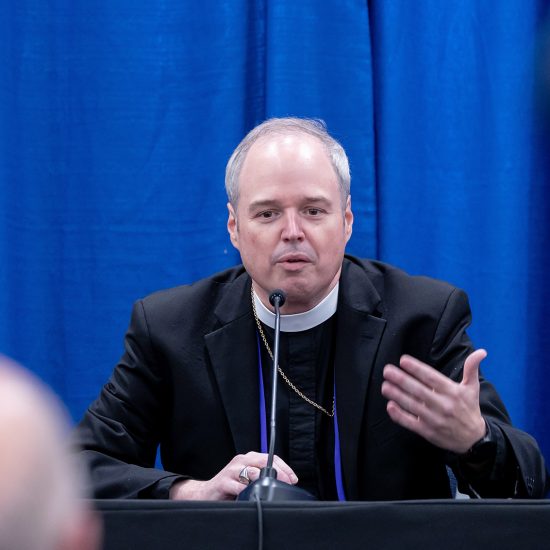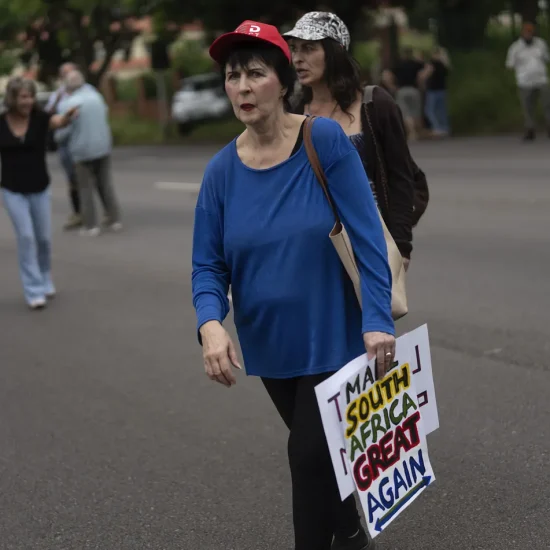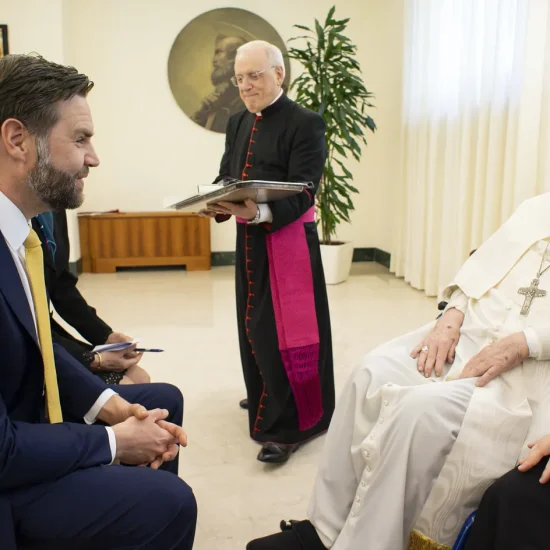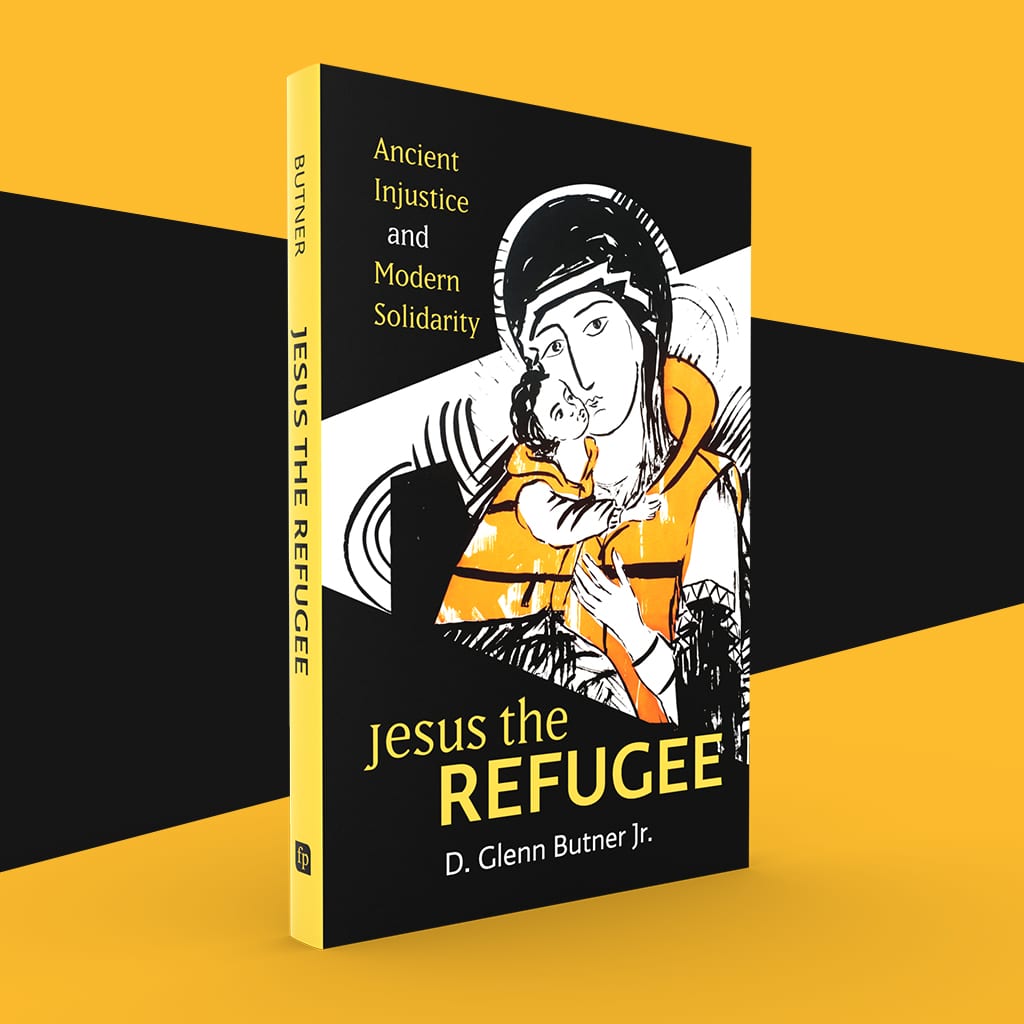
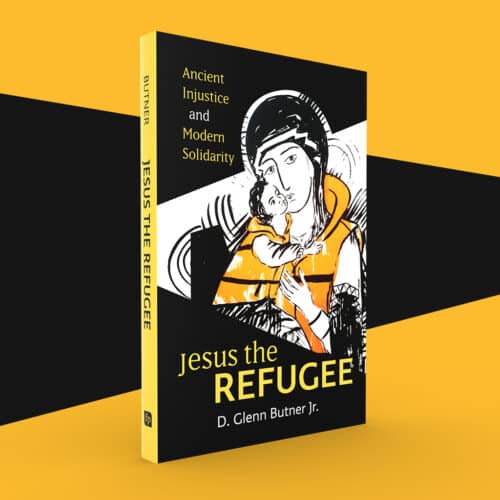
JESUS THE REFUGEE: Ancient Injustice and Modern Solidarity. By D. Glenn Butner Jr. Minneapolis, MN: Fortress Press, 2023. Xi + 230 pages.
It has become commonplace around the Christmas season for more progressive Christians to portray the Holy Family as immigrants or refugees. We see it in iconography, where the Holy Family is depicted as modern migrants seeking shelter in another place. Some congregations that normally place a crèche on the lawn to place the family in a cage, as a protest against the caging of families who have crossed the border. The purpose of these various displays is to connect the flight of the Holy Family to Egypt with the current plight of refugees and immigrants (especially undocumented ones) who are fleeing problematic realities back home. The imagery is powerful. But as powerful as the imagery is, we might ask what it all means. How might the story of the Holy Family, found only in Matthew, speak to contemporary concerns?

Robert D. Cornwall
Theologian Glenn Butner, a professor of theology and Christian ministry at Sterling College in Kansas, offers us a thought experiment in his book Jesus the Refugee. With this thought experiment, Butner invites the reader to reimagine the Holy Family’s flight from the clutches of Herod through the lens of modern immigration/refugee policies and laws. This is the question he lays before us in the book: Would the Holy Family qualify for refugee status under current laws and policies? To find an answer we need to understand the various laws and policies that currently exist in the United States, the European Union, and other nation-states. There are specific protocols and laws on the books that provide the basis for deciding whether immigrants and refugees are welcomed into a country, with that in mind we can ask the question about the possible status of Jesus and his parents if they were to seek asylum in, for instance, the United States.
What Glenn Butner offers us in Jesus the Refugee is, in many ways, a work of liberation theologian. While that’s true, offering us this look at immigration and refugee policy isn’t your typical liberal or progressive Christian. Butner is an evangelical scholar teaching at a small Christian college in rural Kansas. The people who endorsed the book don’t call liberal seminaries and universities home. Instead, they work at places like Wheaton, Trinity Evangelical Divinity School, and Abilene Christian University. What Butner does in this book is draw on Scripture, theology, and legal analysis to provide what I believe is a compelling and important look at one of the major crises of our time. We hear a lot in the United States about the crisis at the border. We hear calls to “close the border,” often from Christians. While Butner, as I read him, doesn’t argue for an open border policy, he does raise important questions for Christians to consider when it comes to how we respond to migration and the plight of refugees.
As the title of Butner’s book suggests, he begins his book by asking the question of whether Jesus and his family might be considered refugees under current policies. He also explores what steps would be involved in deciding their status. He makes it clear that he hopes the reader will gain sufficient knowledge by reading the book to act in solidarity with those who are refugees.
While Chapter 1 serves as an introduction to the book, the true beginning of Butner’s thought experiment begins in Chapter 2 titled “A Day in Court.” In this chapter, Butner defines refugee status and the rights of refugees under the 1951 Refugee Convention of the UN. One of the rights in that convention is protection from forcible return to a country from which one fled, as well as other rights. Additionally, there is the 1967 Protocol Relating to the Status of Refugees, which updated the 1951 convention. The 1980 United States Refugee Act is based on these protocols. Butner notes that there are four criteria on which refugee status can be granted. He explores three of these criteria in Chapter 2. These include a “well-founded fear of persecution;” the reasons for fear must meet the criteria found in Article 1 of the 1951 convention; and whether it was possible to find protection in the home country. He explores the fourth criterion in Chapter 3, which focuses on whether the refugee is currently outside the country of their nationality. The challenge for refugees, including the Holy Family, is offering proof that would allow for asylum under these protocols. Butner suggests that proof likely would have been difficult for the Holy Family to provide. Thus, in Chapter 3, Butner looks at the question of location. In other words, would the Holy Family be seen as refugees fleeing another country or would they be considered Internally Displaced Persons? Since both Judea and Egypt were parts of the Roman Empire, would they be seen as refugees or displaced persons? As you can see this thought experiment is getting complicated.
When we turn to Chapter 4, which is titled “Crossing Dangerous Borders,” Butner looks at the dangers faced by the Holy Family and modern refugees and migrants as they migrate. This includes questions of resettlement, militarized borders, a lack of due process, and more. The discussion of a lack of due process is something most American readers will find odd because it is supposed to be part of our system. However, it isn’t necessarily true for refugees and asylum seekers. For example, discussion of Operation Streamline, a zero-tolerance policy enacted in 2005, appears in several places. This policy provides for a process where asylum hearings are streamlined, which in practice involves migrants/refugees seeking refugee status facing overburdened judges in large contingents, often without representation. Rarely does one’s application succeed.
As anyone watching the news will know, immigration has become increasingly politicized. Many anti-immigrant efforts in the United States and elsewhere build on fear of the stranger. Politicians and the media have sought to create a fear of immigrants/refugees, often suggesting that they are criminals who involve themselves in criminal activities. In Chapter 5, Butner challenges these efforts to stigmatize immigrants. While anecdotal “evidence” might prove the point of the anti-immigrant position, statistics and studies don’t support their charges. This chapter is both insightful and sad. I say sad, because too many Americans, including Christians, have allowed themselves to be swayed by false stories. He also deals with the economic impacts of anti-immigrant policies. Again, these efforts do not support the positions taken by political fear-mongers. In his concluding paragraph, Butner writes:
The ancient Israelites were once scapegoated by the Egyptians as a national security threat (Exod. 1:9-10), leading the Egyptians to fear and enslave the Israelites, even as they were dependent upon Israelite labor (e.g. Exod. 5). In a similar fashion, immigrants today are depicted as a threat, even as American agriculture, for example, needs foreign workers to ensure that all crops are harvested. As I read Matthew 2, I wonder whether Mary and Joseph feared similar scapegoating as they traveled toward Egypt. (p. 130).
The evidence provided by Butner, along with his concluding question, in this chapter makes it a must-read!
Turning to Chapter 6, Butner explores the question of solidarity with refugees, which includes a question of our duty as Christians to live in solidarity with refugees. Here Butner connects our solidarity with refugees with our solidarity as Christians with Jesus. Recognizing that there are different positions on this matter, he addresses the counterpoints, answering them all. Having addressed the challenges, including seemingly racist perspectives by some politically influential Christian leaders, he speaks to our duties as Christians when it comes to refugees. Butner notes that it’s highly unlikely that the Holy Family would get any assistance within the modern refugee system. That reveals a moral failing when it comes to the system. As for the Christian response to refugees, Butner insists that Christians have a duty to show solidarity with refugees, to be in solidarity with their Refugee King.
Butner concludes Jesus the Refugee in Chapter 7, which he titles “Solidarity in Practice.” He uses this chapter to explore several practical ways in which Christians can show solidarity with refugees. This starts with providing for the needs of refugees. But this is only the beginning because too often solidarity begins and ends in charity. He wants the reader to consider embracing more specific institutional changes so that refugees can provide for self-determination. He points out that refugees are not simply victims. They often possess great courage, perseverance, and the ability to care for themselves if allowed to find work and places to live. In other words, unlike what we hear from the lips of politicians, they are not normally burdens on society. He also points out that nation-states, like the United States, need to take responsibility for their own actions that directly or indirectly lead to the plight of refugees (the United States has a long history of interventions that have created displacement). There is, of course, more to this question of solidarity, but these are a few examples of what Butner offers the reader for consideration.
Butner closes Jesus the Refugee with these words: “In light of the tepid Christian support of refugees in Europe and the United States, the challenge of Jesus the Refugee is a call to repentance for many Christians that they might show solidarity with Jesus the Refugee by seeing modern refugees as Jesus and acting accordingly.” (p. 195). If that sounds a bit like Matthew 25, you would not be wrong. For those of us who claim to be followers of Jesus, this book will serve to define what being a follower of Jesus means in practice. With this prophetic call for solidarity with Jesus the Refugee, may we, his followers, find ways of being in solidarity with him as he comes to us in the form of a refugee. We can thank Glenn Butner for taking this opportunity to lay out the reason for being in solidarity with Jesus by being in solidarity with those who find themselves refugees in our time. Taking this position doesn’t mean embracing the so-called “Open Borders.” It means creating a system that is fair and just and addresses the key concerns of those who find themselves needing to migrate.
This review originally appeared on BobCornwall.com.
Robert D. Cornwall is an ordained minister in the Christian Church (Disciples of Christ). Now retired from his ministry at Central Woodward Christian Church (Disciples of Christ) of Troy, Michigan, he serves as Minister-at-Large in Troy. He holds a Ph.D. in Historical Theology from Fuller Theological Seminary and is the author of numerous books including his latest “Second Thoughts about the Second Coming: Understanding the End Times, Our Future, and Christian Hope” coauthored with Ronald J. Allen. His blog Ponderings on a Faith Journey can be found at www.bobcornwall.com.


